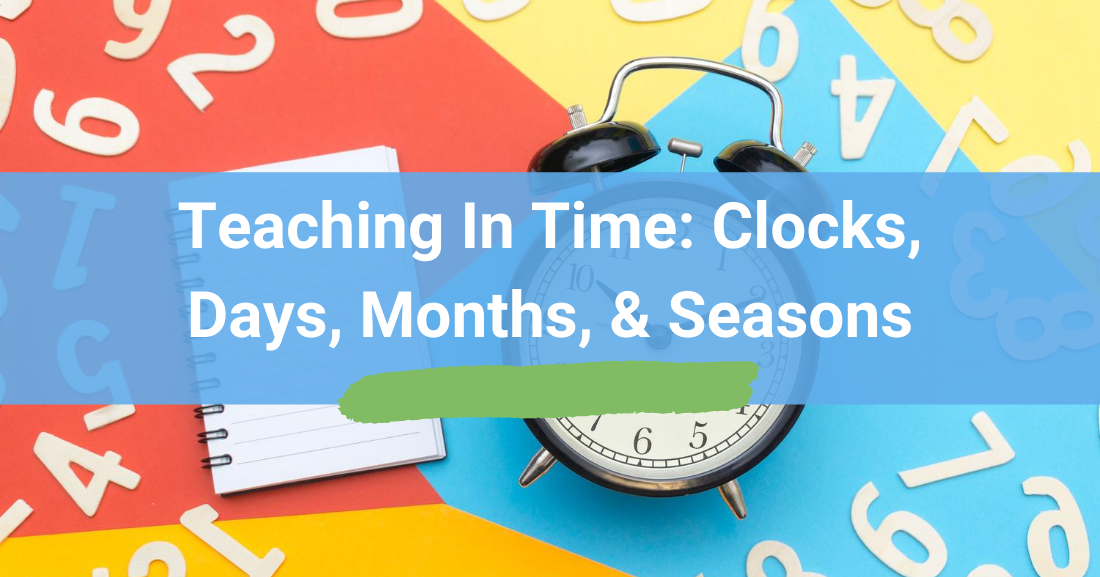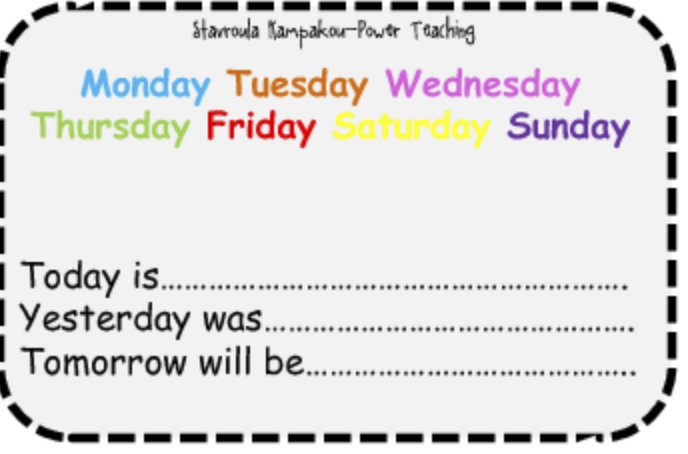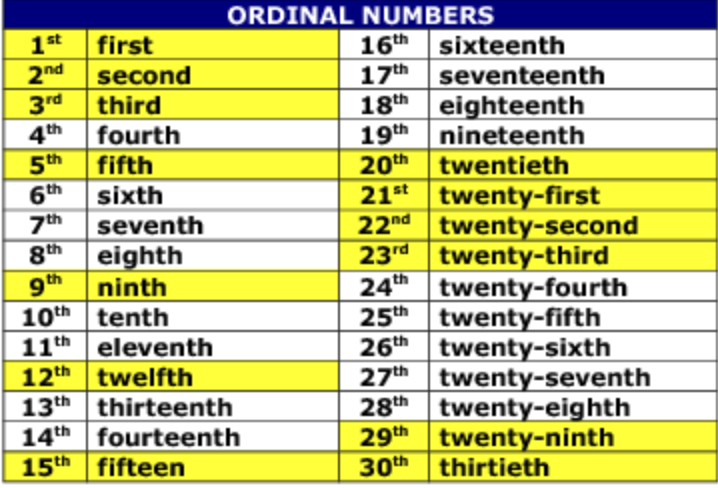Once your students have learned cardinal numbers and ordinal numbers, it’s a great time to teach them about time! (Pun intended.) As always, we suggest starting with a warmup from a previous lesson. This gives students a chance to turn their attention to learning, builds a bit of confidence for the new lessons, and helps enforce old lessons. If you want to learn more about warmers and get some ideas, we have an article that explains everything you need to know!
Now that that’s out of the way, we can get started.

Days Of The Week
While this might seem like an easy jump - don’t be fooled! Tuesday and Thursday and Saturday and Sunday are easily confused, the spelling and pronunciation of Wednesday are not intuitive, and this lesson plan can roll right into grammar lessons.
Of course, you’ll want to start with learning the days of the week and which order they go in. While this days of the week worksheet is intended for kids, it can be easily modified for adult ESLs as well. It includes key terms that are helpful like “today is,” “tomorrow will be”, and “yesterday was,” to help teach or reinforce verb tense.
If you find that you need more guidance on teaching your students the days of the week, we have a whole article dedicated to just that.

Months Of The Year
Teaching your students what month starts the year would be the best place to start. Of course, if you’re an ESL teacher, it’s important to note some countries start the new year on different months, so it might be a fun exercise to just compare. Additionally, four countries don’t follow the seven days a week, 12 months a year rule, so that’s something to take into account if your student lives in one of those countries.
After that, it’s the straight-forward exercise of teaching your students the order, pronunciation, and spelling of the months. To reinforce spelling, this unscramble season worksheet is a great and fun option!
Reinforcing Timing
This months and days bingo worksheet is a great way to reinforce what your students have learned to this point. If you’re concerned about their spelling, it’s a great way to ensure they visually recognize the words. If you’re concerned about their pronunciation, you can have them read their winning words back to you. Finally, if you want to check their comprehension of time, you can always throw them curveballs like, “The day that comes before Monday.”
It’s a fun and versatile lesson you can use with adults, kids, and ESL students!
Seasons Of The Year
Depending on your location and the location of your students, you might have to modify which month falls into what season. This fill-in the blanks seasons worksheet gives students plenty of context for the gaps but is better suited for learners who can read English fairly well.
If you’re teaching an ESL student, this seasons lesson may be more appropriate for someone who can’t read English well.
Writing Dates
Once your students hit this point, they should be able to put the days, months, and years together. One important thing not to overlook is the written form. So it’s important they have a solid foundation for writing out ordinal numbers prior to this portion of the lesson.
Another important consideration is the format of the dates you’ll teach your students. If you’re teaching native kids, this is an easy decision. But for ESL teachers, it can get a bit tricky to decide.
For example, will you teach the commonly used little-endian format (day, month, year), the big-endian format used most often in Asian countries (year, month, day), or the - least common - US-based format (month, day, year)? This order is something to think about for speaking the dates as well as writing them.

Time Rules
Once you move on to times of day, starting with the rules about how to speak about it is especially helpful for ESLs and younger students. This time worksheet is meant to be more of a lesson plan than an activity worksheet, but it’s a helpful introduction to syntax.
Particularly when it comes to common slip-ups like “Three o’clock pm.”
12-Hour Clocks
Since most of the world uses 24-hour formats, teaching ESL (or younger students as well) how to tell time on a 12-hour clock is important if you’re teaching them a language that relies on the 12-hour system.
This empty clock worksheet not only gives your students the written form of the time to look at but also gives them the opportunity to draw the time themselves. When teaching ESL students from most countries, it’ll take extra time for them to get the mental math of going from a 24-hour system to a 12-hour system down.
If that’s the case, it might be helpful to have them work on getting the numbers without including AM or PM until they get the hang of how the 12-hour clock works. This telling time printout can be helpful for ESL students to reference once you move onto AM and PM lessons.
Teaching Time Slang
Quarter to, half past, quarter of, and other confusing-sounding terms can be tough to tackle. It involves a bit of mental math - but it’s an important concept to teach when communicating about time. Here’s a helpful time worksheet that focuses on teaching just that with blank clocks students need to properly fill in.
For more help teaching cultural phrases like “midnight,” check out our article on teaching time!
Putting It All Together
With older students, having them practice appointment-making skills is a super useful way to test their comprehension so far. Appointment setting practices combine days, dates, months, and times. It also allows for back and forth dialogue about availability.
Younger students could benefit from writing out prompted dates as well, but that’s an exercise that could be completely on something as simple as lined paper.
If you need more resources for your lesson plan, we have over 30 free worksheets for dates and 108 worksheets for days and months at your disposal!
P.S. If you enjoyed this article, please help spread it by clicking one of those sharing buttons below. And if you are interested in more, you should follow our Facebook page where we share more about creative, non-boring ways to teach English.







